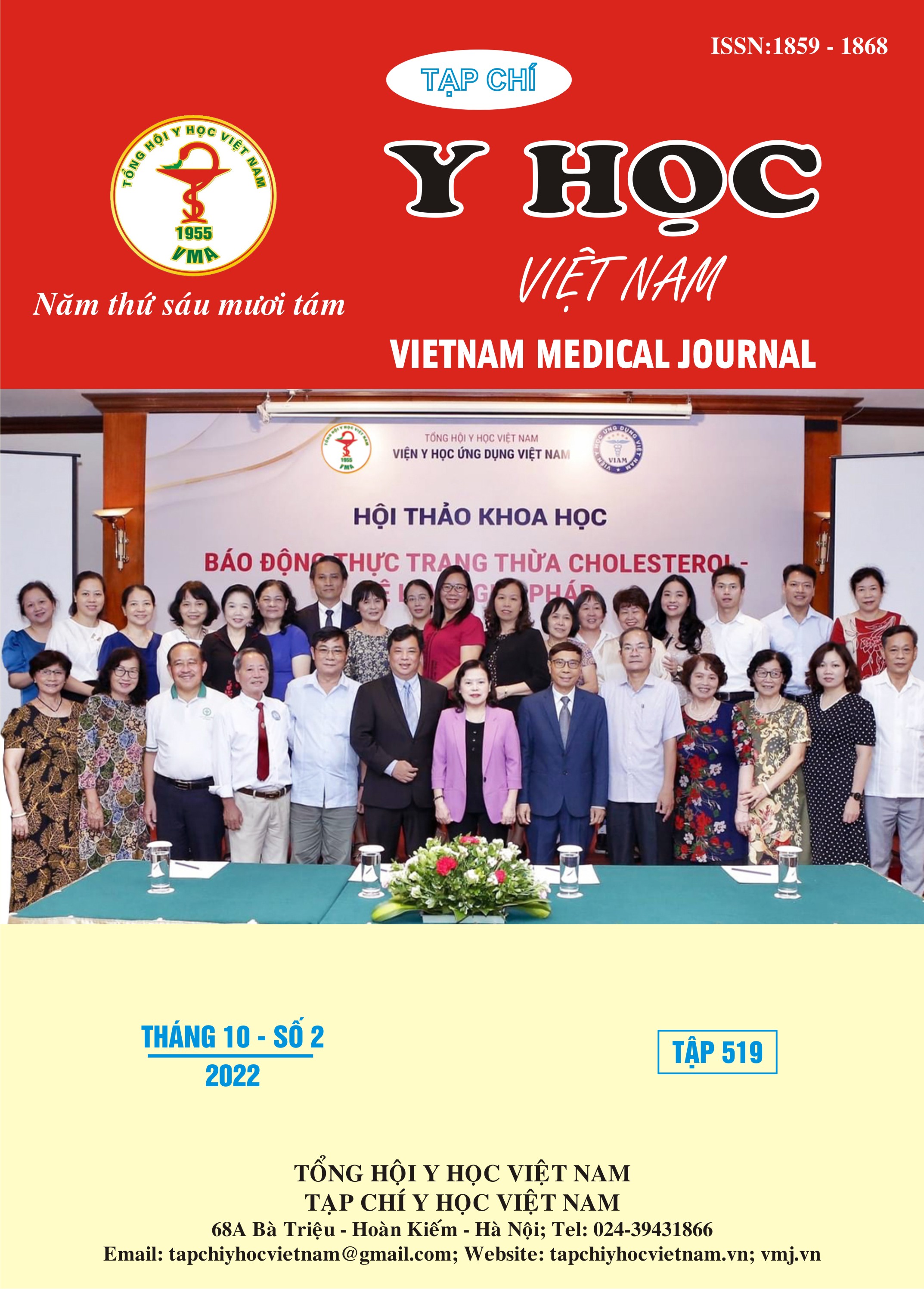RESULTS OF USING NEGATIVE PRESSURE WOUND THERAPY (NPWT) IN THE TREATMENT OF CHRONIC ULCERS OF THE SKIN
Main Article Content
Abstract
The goal of this research is to evaluate the results of using negative pressure wound therapy in the treatment of chronic ulcers of the skin. This study was conduct of 11 patients diagnosed with Chronic Ulcers, treated with NPWT at Bach Mai Hospital from January 2021 to December 2021, specifically retrospectively from October 2021, prospective from October 2021 to December 2021. The study method was cross-sectional study. The result showed that the age group 17-60 accounted for the highest rate of 54.5%. The mean age of the study was 57.6 ± 14.8 years old. The type of chronic diabetic ulcer and chronic non-healing ulcerated tophaceous gout accounted for a high rate of 27.3%. The average NPWT time were 6.7 ± 2.5 days. The majority of patients after NPWT performed thin skin grafting with the rate of 36.3%. The result of surgical treatment after NPWT was 90.9% success. The mean hospitalization day was 26.7 ± 9.0 days. We conclude that the negative pressure wound therapy is a very effective way to support the treatment of chronic ulcers, helping to reduce wound size, eliminate inflammation and bacterial, prepare good wound bed to perform skin graft to assist for the next plastic surgical wound closure.
Article Details
Keywords
negative pressure wound therapy, VAC, chronic ulcers, Bach Mai Hospital
References
2. Bryant R., Nix D. Principles for practice development to facilitate outcomes and productivity. J Acute Chronic Wounds: Current Management Concepts 5th ed St Louis, MO: Elsevier 2016:1-20.
3. Argenta LC, Morykwas MJ. Vacuum-assisted closure: a new method for wound control and treatment: clinical experience. Annals of plastic surgery. Jun 1997;38(6):563-76; discussion 577.
4. Hu X, Ni Y, Lian W, Kang L, Jiang J, Li M. Combination of negative pressure wound therapy using vacuum-assisted closure and ozone water flushing for treatment of diabetic foot ulcers. J International Journal of Diabetes in Developing Countries. 2020;40(2):290-295. doi:10.1007/ s13410-019-00769-4
5. Jiburum B, Opara K, Nwagbara I. Experience with vacuum-assisted closure device in the management of benign chronic leg ulcers. J West Afr Coll Surg. 2011;1(1):89-100.
6. Nguyễn Văn Thanh, Trần Vân Anh, Nguyễn Văn Huệ. Nghiên cứu ứng dụng điều trị loét cùng cụt mức độ nặng (III, IV) bằng vạt da cân có cuống mạch nuôi nhánh xuyên động mạch mông trên. Tạp chí Y - Dược học Quân sự. 2017;1
7. Hu X, Lian W, Zhang X, Yang X, Jiang J, Li M. Efficacy of negative pressure wound therapy using vacuum-assisted closure combined with photon therapy for management of diabetic foot ulcers. Ther Clin Risk Manag. 2018;14:2113-2118. doi:10.2147/TCRM.S164161
8. Nguyễn Trường Giang. Đánh giá kết quả ứng dụng liệu pháp hút áp lực âm bằng máy hút thông thường điều trị vết thương. Tạp chí Bỏng & Y học thảm họa. 2013;2013(2):42-46.
9. Weed T, Ratliff C, Drake DB. Quantifying bacterial bioburden during negative pressure wound therapy: does the wound VAC enhance bacterial clearance? J Annals of plastic surgery. 2004;52(3):276-279. doi:10.1097/01.sap.0000111861.75927.4d
10. Thomas DR. Prevention and treatment of pressure ulcers: what works? what doesn't? J Cleveland Clinic journal of medicine. 2001;68(8):704-7, 710. doi:10.3949/ccjm.68.8.704


